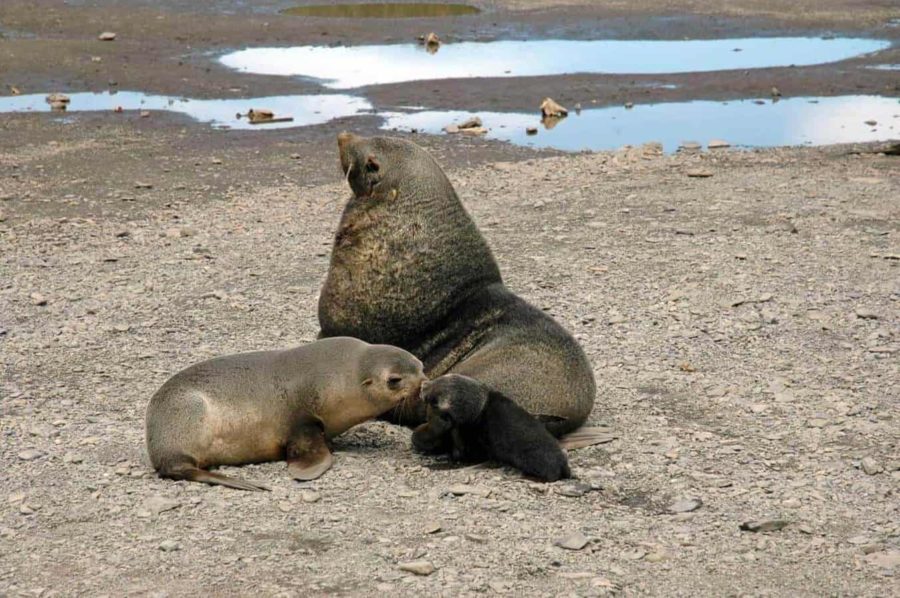Researchers studying Antarctic fur seals have discovered their scent has a unique ‘profile’ which enables them to recognise their offspring and family members. Until now researchers thought voice recognition was mostly important for finding their young, but now it is proven that scent also plays a crucial part. The results are published this week (Monday 10 August) in the journal the Proceedings of the National Academy of Sciences.
The sense of smell and an animal’s scent is an important means of communication in the animal kingdom. This applies not only to social interactions, but also to territorial behaviour, recognising kin and when selecting a mate. However, understanding communication by smell is very challenging because of the mixture of chemicals on an animal’s skin – it may be affected by hormones, the microbial flora, body condition and health, and environmental factors.
A team of scientists from the Bielefeld University and British Antarctic Survey sampled the skin and fur from dozens of mothers and their pups from two different colonies on the breeding beaches at Bird Island Research Station near the sub Antarctic Island of South Georgia. They found the scent of mothers and pups had similar characteristics.
Martin Stoffel, lead author from Bielefeld University says: “Our results are surprising for a marine animal that spends more than 80% of its time at sea. They show that fur seal pups smell similar to their mothers as many of the chemicals on their skin are shared and genetically encoded. Also, individuals with high genetic variability have a more complex scent profile, meaning they have a greater number of substances on their skin. This could be significant when it comes to choosing a mate, because genetic diversity is often positively correlated with survival.”
Antarctic fur seals give birth to a single pup and nurse it for approximately four months until weaning. During this time, mothers undertake five- to ten-day foraging trips at sea to find food and produce milk that they deliver to their pups over a one- to three-day period ashore. When they return from the sea, they need to find their pups.
Co-author Dr Jaume Forcada from British Antarctic Survey says: “In heavily populated breeding beaches such as those of Bird Island, where thousands of pups are born, fur seal mothers need to find their hungry offspring when they return from long foraging trips at sea. This study has shown us that scent is critical to this process, especially for bonding.”
Co-author Dr Barbara Caspers specialises in communication through smell at Bielefeld University. She says: “The idea that scent signal relatedness has been around for a long time, but this has not been chemically proven until now. In evolutionary history, the sense of smell is the first sense. There is reason to believe the mechanisms are similar across the animal kingdom and not just fur seals.”
According to co-author Dr Joe Hoffman, scent is multidimensional. He says: “The scent profiles are very complicated – only a fraction of the substances encode relatedness. Nevertheless, the fact that relatedness is genetically encoded could mean that related fur seals are able to recognise each other through odour and this in turn could help prevent inbreeding and preserve genetic diversity.”
The study provides more information about the behaviour of Antarctic fur seals as part of a 30-year study monitoring their populations on the island of South Georgia. Fur seal populations on the island of South Georgia were decimated by hunting around 100 years ago. Scientists are monitoring their populations to observe the impacts of fishing and climate change.


